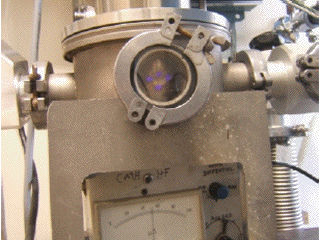
Thin films are often required to create devices. In these projects we benefit from our fundamental work on molecular organization and interactions at surface as well as PECVD growth of cabonated amorphous silicon thin films. For instance the architecture of biosensors on silicon relies on an appropriate choice of the a-SiC film thickness and composition (Fig. 1). We also investigate the formation of metalorganic thin films on functionalized silicon surfaces.

Fig. 1 : Two examples of fluorescent biosensors based on functionalized a-SiC thin films. (a) A λ/4 layer of a-SiC is deposited on a metallic reflector; (b) A nm-thick film of a-SiC is deposited on gold nanostructures to induce plasmon enhanced fluorescence.
Current projects:
– Amorphous silicon for Li-ion negative electrodes:
We investigate amorphous silicon as possible material of negative electrodes in Li-ion batteries.
– Growth and properties of metalorganic thin films:
We investigate the formation and properties of Prussian Blue Analogues thin films as well as metal organic frameworks (MOFs).
– Fluorescent and plamonic biosensors on silicon:
We develop reusable and highly sensitive fluorescent and plasmonic biosensors which architecture is based on the covalent immobilization of probes on amorphous silicon thin films.
Recents works:
• Porous silicon from amorphous silicon (in French)
• Porous silica by anodization (in French)
• Silicon electrochemical dissolution in fluoride solutions (in French)
• Organic monolayers for microelectronics (in French)

